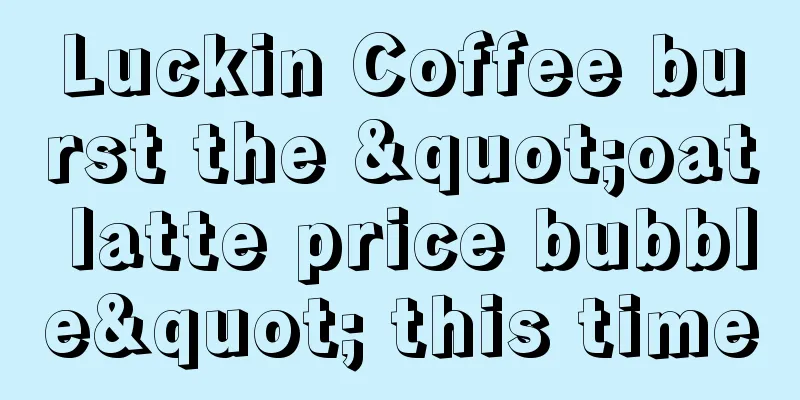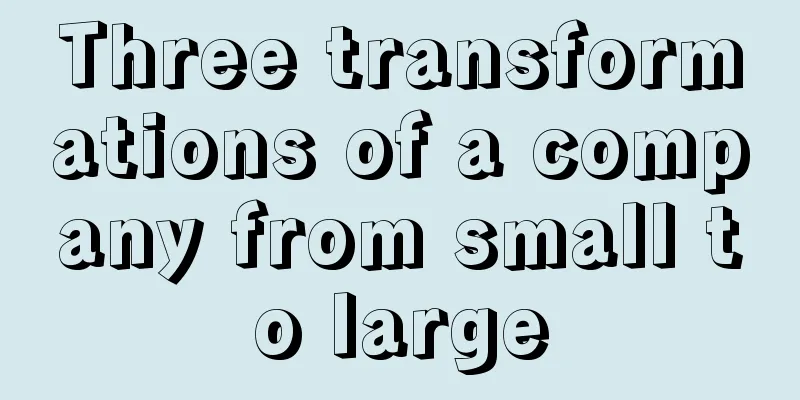Super anchor's trust game

In game theory, to judge whether a person is honest and trustworthy, we need to see whether honesty is beneficial to him. However, people in reality are not always so rational, and emotional factors are often involved. This means that even if a joint action by both parties can bring greater utility to one party, he may not do so. At this time, we are faced with the problem of trust game. 1. The trust game of super anchors includes three parties: consumers, brand merchants and platformsFor consumers, they believe that super anchors can bring them the lowest-priced products on the entire network, helping them save more money during the shopping process. Consumers' trust is based on the super anchors' strong bargaining power against merchants, and this bargaining power is based on a super-large consumer group. Therefore, the trust game between super anchors and consumers is actually a reciprocal preference: consumers trust super anchors, and super anchors have strong bargaining power based on their consumer scale. So how can super anchors gain consumers’ trust when they don’t have a consumer scale? At this time, it is the trust game between the super anchor and the brand merchants and platforms in the early stage: the super anchor obtains the promise of platform support, and the merchants have the expectation of "volume" of the super anchor based on their trust in the platform, so they give the super anchor the lowest price in the entire network. Because the merchants give the super anchor the lowest price in the entire network, the platform trusts the super anchor more and fulfills its promise. Consumers can buy the lowest-priced goods on the entire network from super anchors, and thus trust that super anchors will always provide them with the lowest-priced goods on the entire network and follow super anchors, which enables super anchors to have an extremely large consumer group. At this point, a trust game between super anchors, consumers, brand merchants and platforms has taken shape. There is a key factor in this process: the lowest price on the entire network. How can consumers form the impression of "the lowest price on the entire network" while ensuring that super anchors and merchants can still make money? At this time, the trust game between super anchors and brand merchants begins. 2. Trust Game between Super Anchors and BrandsThere is a classic experiment in trust game: suppose two participants A and B share money, and both A and B get $12. We call A's role the "giver" and B's role the "sharer". A gives part of the money to B. Specifically, A can choose to give you $0, $4, $8, or $12. No matter how much money A gives to B, the organizer of the experiment will give B twice as much. For example, if A gives $4 to B, the experiment organizer will give B an additional $8. Therefore, now in addition to the original $12, B has $4 from A, plus the additional $8 from the experiment organizer, so B has a total of $24. If A gives all $12 to B, the experiment organizer will still give B twice as much, which is an additional $24. Together with the original $12, B will get a total of $48. Depending on how much money A gives B, that is, $0, $4, $8, or $12, the final amount of money in B's hand will be $12, $24, $36, or $48. At this point, how B will share B's money with A, or even whether B will share it with A, is completely up to B, and B can give A any amount between $0 and $48. The key point is that in the trust game, A cannot choose to refuse B. Once A gives B a part of the money, A will no longer have any influence on the subsequent development of the whole thing. In the end, how much money each person can get is entirely determined by B. The payoff scenario of this game can be summarized as the payoff matrix in the figure below. There is a large grid under each possible amount of money A can give to B, and the grid contains the possible payoffs of each choice of A. From the table above, we can see that A shares money with B based on trust, and B can get twice the money after getting A's share. That is to say, in the trust game, the benefits of the sharer are maximized and the risk is extremely low. According to the research of "Zhuang Shuai Retail E-commerce Channel", the same trust game also exists in the cooperation between super anchor Li Jiaqi and new domestic brand Hua Xizi: Hua Xizi is equivalent to A, and Li Jiaqi is equivalent to B. Hua Xizi chose to give Li Jiaqi a high commission. Because it is a "shopping guide and traffic diversion" model, no matter how many Hua Xizi products Li Jiaqi sells, he will benefit and the risk is extremely low (no stockpiling). The platform and consumers are equivalent to the organizers of the experiment. The more Huaxizi products Li Jiaqi sells, the more additional benefits he gets from the platform and consumers (platform promotion incentives, consumers buying more products from other brands). The greater benefit that super anchors give back to brands is that the more brand products they sell, the higher the brand's visibility will be, thereby gaining more free search traffic and repeat purchases from their stores. Of course, this can also be seen as the benefit that the super anchor gives to the brand, that is, B gives money to A after getting the money shared by A. The only difference is that the benefits that super anchors bring to brands are not given actively, but formed passively. But this is how this trust game will continue and achieve a win-win situation. From this point of view, it is difficult for Hua Xizi to excuse herself as a victim in Li Jiaqi’s “hard work gate” incident (giving high commissions to the super anchor, resulting in meager profits for herself). In addition, we also need to realize that in addition to forming a trust game with super anchors, brands also form a trust game with platforms and consumers. 3. Trust Game between Brands, Platforms and ConsumersThe brand is still A, while the platform and consumers are B. The two are actually a whole. Only when the brand shares its innovative products and services and maximizes the benefits of the platform and consumers can it gain the benefits shared by the platform and consumers after gaining their trust. Super anchors require brands to give them high commissions and the lowest prices on the entire network. The platform hopes that consumers can buy more cost-effective products through super anchors, thereby reducing the workload of bargaining between the platform and brands and winning the long-term trust of consumers. Consumers, like platforms, also place their expectations of purchasing cost-effective products on super anchors and place their trust in them. This relationship can also explain why Taobao Live remained silent during Li Jiaqi's "hard work incident". This is because the platform and consumers have the same demands, and a large number of consumer voices actually represent the platform's attitude. In the rules of e-commerce platforms, there is no way to formulate penalty clauses for super anchors' "slips of the tongue". Hua Xizi should also be very clear about the relationship between the super anchor, the platform, consumers and herself, but in actual operations, she only established unconditional trust in the super anchor, but not in the platform and consumers. For example, a super anchor will require that no one other than him can sell at a lower price than the brand. This pricing strategy makes the super anchor the representative of the "lowest price on the entire network." In addition, brands need to pay attention to pricing power and the trust relationship between platforms and consumers. Deliberately creating the "lowest price on the entire network" will also be discovered by platforms and consumers, leading to a crisis of trust. Some brands also often use the method of raising prices first and then lowering them to create a "low price" impression during big sales. For brands, each live broadcast of super anchors is equivalent to a big sales, so this behavior of undermining consumer trust is repeated. Whether it is the super anchor or the brand that takes the lead, the result is the same for consumers. The "Effort Gate" incident was just the fuse. The fundamental reason was that Hua Xizi did not balance the trust relationship between the super anchors and consumers well in the trust game between them, or it trusted the super anchors more than consumers. This incident also reflects that some new domestic brands are too dependent on channels for sales (Hua Xizi uses super anchors as its main sales channel), focusing on product efficacy and packaging design, but neglecting to communicate with consumers at a strategic level. Management scientist Mintzberg defines strategy as a series or set of decisions or actions. "An organization without strategic expression is like a person without a name. People cannot understand him, talk about him, or follow him." In the history of human economic development, consumers cannot tell from the product packaging design alone whether a brand makes quick money by OEM and then relying on channel dividends, or invests in research and development to continuously innovate products to make consumers' lives better. The biggest difference between the two lies in the continuous output and expression of "concepts", "strategies" and "visions". In the process of strategic communication with consumers, it is necessary to understand a basic concept: Reputation bank. The reputation value formed by the reputation bank is a typical Soft Power, which corresponds to a company's Hard Power such as equity structure, asset valuation, and R&D investment. That is to say, in constructing the "four-dimensional brand value", Huaxizi attaches great importance to channel value, efficacy value and emotional value, but ignores the enhancement of reputation value. Whether it is the background and experience of the founder, the mental journey of creating the brand, the twists and turns in developing new products, or the adjustments to the organizational structure... there is very little information about the Huaxizi brand and its founder on the Internet. Because reputation assets have not been well accumulated, reputation value cannot be established simply and quickly in a public relations crisis. After the crisis, the founder of Huaxizi posted a statement that she wanted to be on par with Chanel and become an international high-end beauty brand, which only backfired and intensified consumers' negative emotions. In sharp contrast to Hua Xizi is L'Oreal. Li Jiaqi once issued a statement to suspend official cooperation with L'Oreal. The reason was that many consumers claimed that when they purchased L'Oreal beauty products in Li Jiaqi's live broadcast room, this was L'Oreal's biggest discount of the year. However, many consumers purchased the products with coupons in L'Oreal's official stores, and the final discounted price was even lower than the price in Li Jiaqi's live broadcast room. L'Oreal then issued an apology letter. In the statement, L'Oreal apologized to consumers twice, but did not propose a proper solution. Instead, it said that it would discuss a solution after conducting a comprehensive investigation. Interestingly, in the comments section of the apology letter, consumers said that there was nothing wrong with L'Oreal's superimposed coupon discounts. On the other hand, the behavior of the super anchor was more like a consumption monopoly in the live broadcast room. Consumers can only get the lowest discount from Li Jiaqi, and in the future, consumers can only consume in Li Jiaqi's live broadcast room. Comparing the two, the difference is obvious. IV. ConclusionIn this trust game of the super anchor, domestic brands need to re-examine the huge risks brought about by a single trust game, and attach importance to continuous communication with consumers and accumulate reputation assets from a strategic level, enhance the brand's reputation value, form a "brand four-dimensional value" system, and establish a trust relationship with platforms and consumers. Let consumers fall in love with the brand from the bottom of their hearts, so as to withstand sudden public crises again and again, and let platforms and consumers speak for the brands they love, instead of blaming the brands one-sidedly. As for super anchors, according to the observation of "Zhuang Shuai Retail E-commerce Channel", the influence of super anchors has already had a star effect, and e-commerce platforms still need them to improve the user activity and stickiness of the platform. Super anchors and e-commerce platforms have also formed a situation of mutual dependence, co-existence, growth, and common honor and disgrace. As the spokesperson for consumers and platforms, super anchors must not only be careful in what they say and do, but also be respectful and attentive in selecting good products and negotiating good prices for consumers in order to continue to win the trust and support of consumers. |
<<: Indonesian e-commerce is changing, what’s the next step for MCNs and brands going overseas?
>>: Young people who were “controlled” by the joint name
Recommend
Is it easy to place orders on Amazon? How long does it take for a novice to place an order on Amazon?
For new sellers, an important question is: Is it e...
Which categories on Amazon are easy to get orders from? Which categories are more popular?
On Amazon, a huge e-commerce platform, Amazon sell...
In 2025, brands will have to change their thinking when promoting products on Xiaohongshu!
As platform competition intensifies and user needs...
How to double the feeling of doing things
Master flow creation, manage psychological squeeze...
HEYTEA issues wedding certificates, Bananain "reverse marketing" | Valentine's Day collection
New Valentine's Day marketing plans are coming...
9.9 yuan, to rectify or save hot pot? | Midfield War
The hot pot industry has not been immune to the do...
What are the payment methods for foreign trade?
To do foreign trade, you need to know about the pa...
How does Shopee analyze potential hits? How does it work?
If you want to sell well on Shopee, you need to fi...
The road to improving the capabilities of product managers and operations begins with becoming a member of the Qidian Classroom!
The Internet industry is a rapidly changing and hi...
When content communities ask users for money
The commercialization of content communities has a...
How should maternal and infant e-commerce platforms attract new customers?
As a data analyst, it is very important and valuab...
What are the standards for duplicate distribution on Amazon? How to avoid penalties for duplicate distribution?
I believe everyone is familiar with Amazon. It can...
What are the entry requirements for etsy? Do I need a brand to join?
If you want to trade on Etsy, you must ensure that...
Despite changing times, marketing should stick to core principles
In the ever-evolving business era, marketing strat...
Why does Luckin Coffee make huge money every year in its private domain, but you spend a lot of energy and money on your private domain but still can’t make it?
Why can Luckin's private domain operations con...









